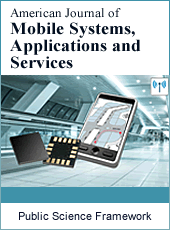American Journal of Mobile Systems, Applications and Services
Articles Information
American Journal of Mobile Systems, Applications and Services, Vol.1, No.3, Dec. 2015, Pub. Date: Jan. 21, 2016
Analytics for Insurance Fraud Detection: An Empirical Study
Pages: 227-232 Views: 2702 Downloads: 1698
[01]
Carol Anne Hargreaves, Business Analytics, Institute of Systems Science, National University of Singapore, Singapore, Singapore.
[02]
Vidyut Singhania, Business Analytics, Institute of Systems Science, National University of Singapore, Singapore, Singapore.
Automobile insurance fraud is a global problem. Handling fraud manually has always been costly for insurance companies. Data analytics can play a crucial role in fraud detection and can aid insurance companies to identify fraud. Typically, there are easily more than thirty variables that are used for the fraud analysis. This paper proposes to determine which variables are significant for fraud detection and to provide a framework for the insurance fraud detection. Further, this paper illustrates the business value of data analytics for insurance fraud detection using an empirical study and demonstrates that through a few business rules, the insurance company can accurately identify fraudulent claims which can most likely reduce costs and increase profitability for the company.
Fraud Detection, Analytics, Insurance, Significant Variables, Business Rules, Framework
[01]
Bolton, R.J. & Hand, D.J. (2002). “Statistical Fraud Detection: A Review”, Statistical Science, Vol. 17. No. 3, 235-255.
[02]
http://www.oxforddictionaries.com/definition/english/fraud.
[03]
Wilson, J.H (2009). “An Analytics Approach to Detecting Insurance Fraud using Logistic Regression. Journal of Finance and Accountancy. Vol. 1 Page 1.
[04]
Artis, M., & Mercedes, A., & Montserrant, G. (2002). Detection of Automobile Insurance Fraud with Discrete Choice Models and Missclassified Claims. The journal of Risk and Insurance.
[05]
Verma, R. & Sathyan, R. M. “Using Analytics for Insurance Fraud Detection: 3 innovative methods and a 10-step approach to kick start your initiative”. Digital Transformation. Pages 1-10.
[06]
KPMG International (2006). “Fraud Risk Management: Developing a Strategy for Prevention, Detection and Response”.
[07]
Berry, M. and Linoff, G (2000). Mastering Data Mining: The art and science of customer relationship management. John Wiley & Sons, New York, USA.
[08]
Costons, M (2010). “Analytics and Claim Fraud: Assembling the proper toolbox to prevent and detect scams”. Claims Magazine. Page 43 – 45.
[09]
Spathis, C. (2002). “Detecting falsified financial statements using published data: some evidence from Greece “. Managerial Auditing Journal, 17 (40, 179 – 191.
[10]
Spathis, C., Doumpos, M., & Zopounidis, C. (2002). Detecting falsified financial statements: a comparative study using multicriteria analysis and multivariate statistical techniques. The European Accounting Review, 11 (3), 509 -535.
[11]
Phua, C., Lee, V., Smith, K. & Gayler, R. (2005). A comprehensive survey of data mining-based fraud detection research, Artificial Intelligence Review (2005) 1–14.
[12]
www.angoss.com/.

ISSN Print: 2471-7282
ISSN Online: 2471-7290
Current Issue:
Vol. 5, Issue 1, March Submit a Manuscript Join Editorial Board Join Reviewer Team
ISSN Online: 2471-7290
Current Issue:
Vol. 5, Issue 1, March Submit a Manuscript Join Editorial Board Join Reviewer Team
| About This Journal |
| All Issues |
| Open Access |
| Indexing |
| Payment Information |
| Author Guidelines |
| Review Process |
| Publication Ethics |
| Editorial Board |
| Peer Reviewers |


